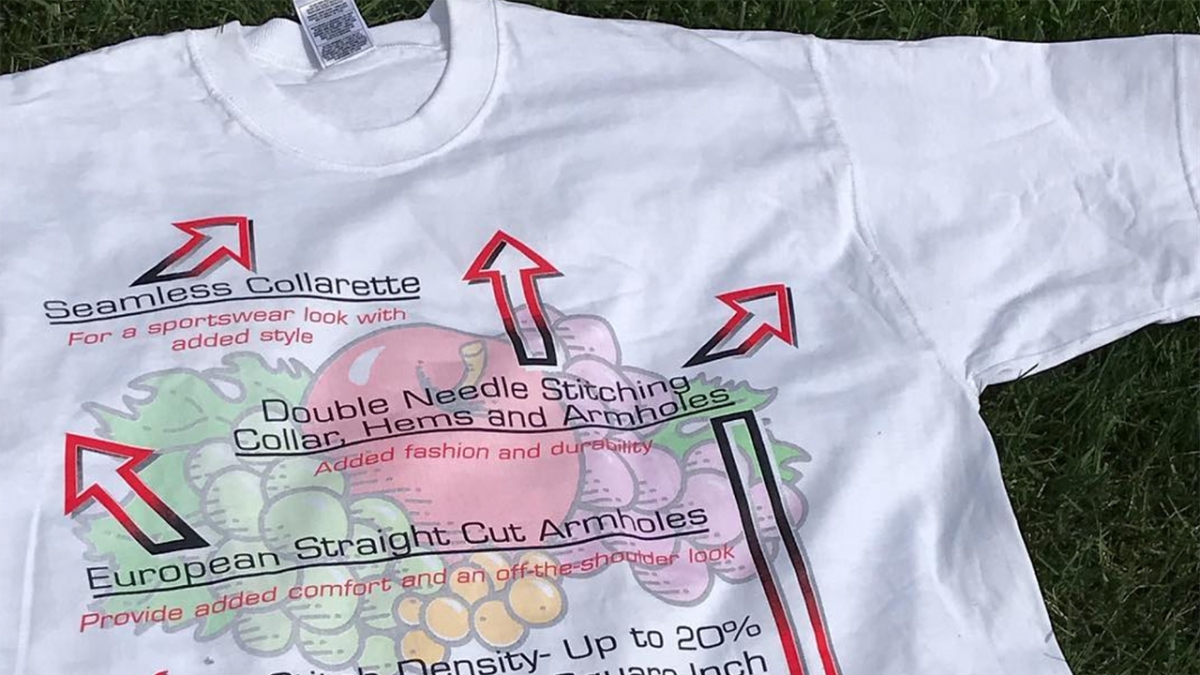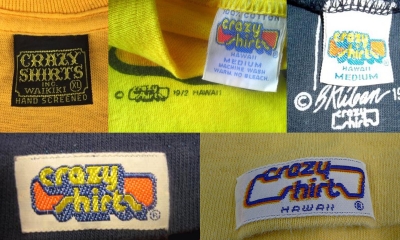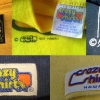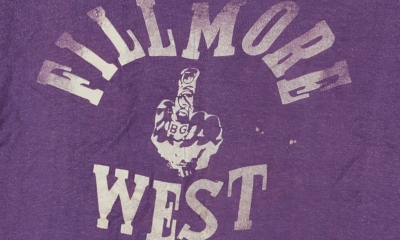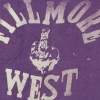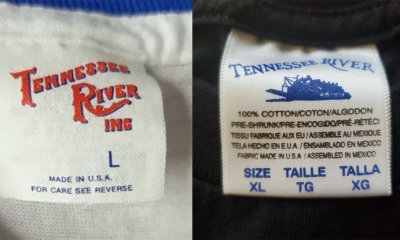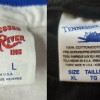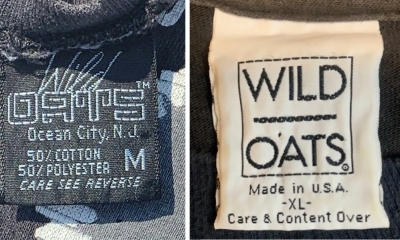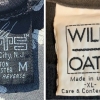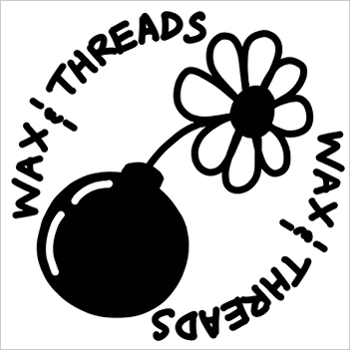History
Single-Stitch: Let’s Tie Up Some Loose Ends
The first time I heard the term “single-stitch” was in the early aughts when vintage Levi’s Jeans were having their vintage money moment. Everyone wanted to get their hands on (and legs in) a pair of Big E jeans or and selvedge, redline, hidden rivets, and single-stitch were among the vintage jean-related keywords at the time. At some point in the LEVI’s timeline, double-stitch construction was introduced and single-stitch became a sought-after feature. Dealers would often turn the rear pocket inside out to examine the hem because it was one method used to evaluate a pair.
Meanwhile, in 2005, in the VTU (vintage tee universe) the term “single-stitch” wasn’t really a thing. 1970s and 1980s t-shirts were having their vintage money moment and single-stitch construction was mostly standard, so the term wasn’t on the radar of vintage t-shirt dealers. Those making somewhat convincing counterfeit tees were primarily using actual vintage blanks. Thick, larger, 100% cotton, modern-day blanks were an immediate red flag on authenticity. We didn’t have to consider the stitch construction to know a shirt was bogus, we mostly knew just by looking at it or checking the measurements.
Sometime in the mid-2010s the term single-stitch really started to gain momentum within the vintage t-shirt market. The vintage t-shirt timeline was shifting: the 1990s were the new 80s and tees created in the new millennium were starting to come into focus. Tees manufactured in the 1990s were starting to be constructed with double stitching. The more the decade wore on, the more prevalent it became and some attribute this movement to free trade in 1994. The community started to take notice and the single vs double stitch conversation began. @theatticvintageco posed this question in our forum in 2016 and 5 years later, I’m finally getting to the “blog” post I promised.
These days the term Single-Stitch is standard. There are currently 25k eBay listings with “single stitch” in the title, and Bidstitch implemented a field for sellers to specify what stitching the t-shirt features. During an IG live auction, hosts often hype single-stitch pieces. Heck, it even has its own slang, single-single, single-dingle. Undoubtedly, single-stitch construction is sought after and considered a premium feature of a vintage t-shirt.
But why? Here’s where it gets a little weird. A buyer can be excited about a piece and then change their mind when they find out it’s double-stitched, despite the shirt being a true vintage piece. Some buyers are using stitching as a method to authenticate. Sure, it’s one tool in your authentication toolbox, but it has its limitations and every claim about single-stitch vs double stitch has a ton of exceptions.
What Is a Single-Stitch Vintage T-Shirt?
Single stitch refers to a single line of thread construction on a t-shirt. The main focus is the seams on the arm cuff and lower hem and whether or not there’s a single or double line of thread.
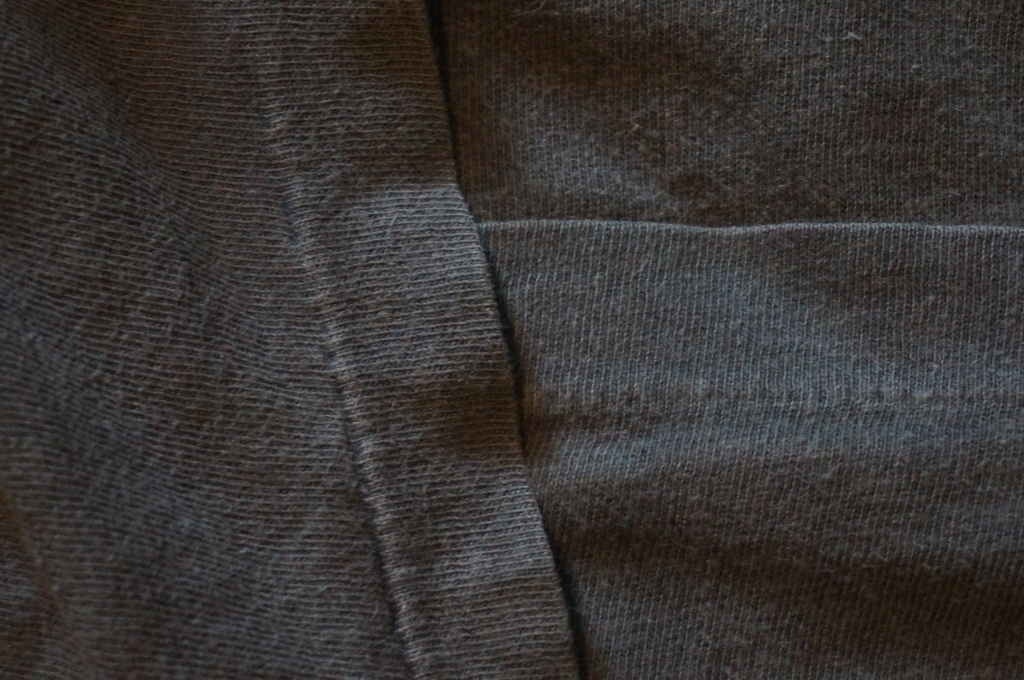
When Was Double-Stitch Introduced?
The timeline for when t-shirts transitioned to double-stitched is all over the place. It seemed to gain the most traction in the 1990s, (though there are plenty of 70s and 80s examples) and many have theorized it’s attached to free trade. But this movement toward double-stitch construction wasn’t like the Levis example I spoke of earlier. In LEVIs’ case, there’s a specific year it happened. With vintage t-shirts, it isn’t as cut and dry. It came down to the decision of tons of manufactures if and when they started doing it. Some did it sooner, some later, so we can’t accurately say there’s a firm date as to when it became standard.
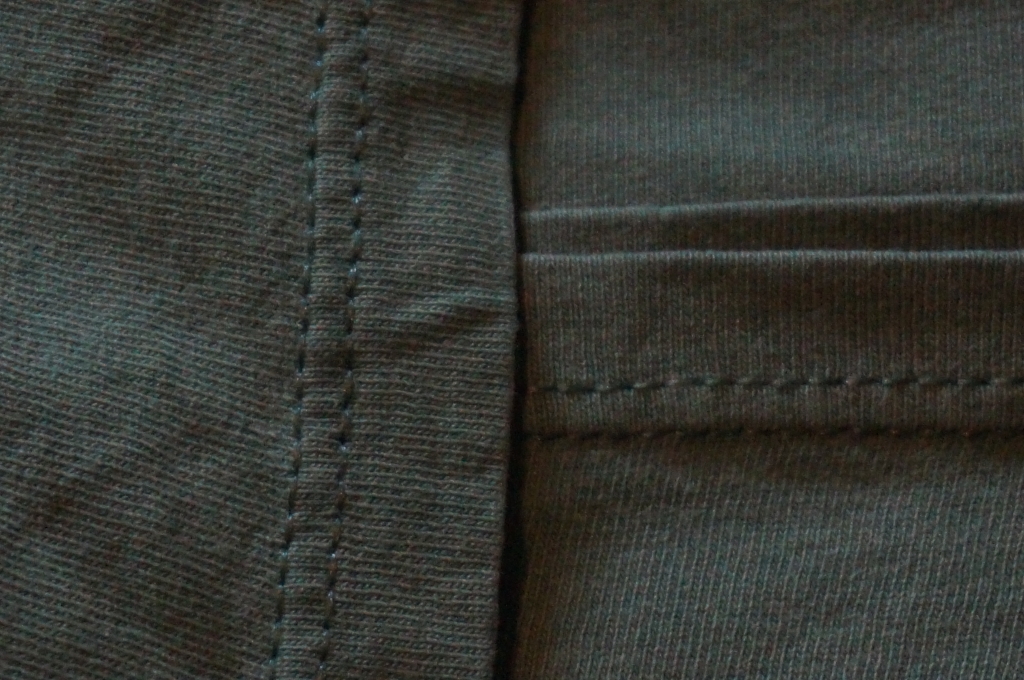
Why Was Double-Stitching Introduced?
One theory floating around is that the money saved by manufacturing tees on foreign soil could be then be spent improving the product with additional seam construction. I’ve also heard some say that foreign manufacturers were using lessor quality cotton and the additional stitch helped make up for this. I’m not exactly sure if there’s truth to claims that connect it to free-trade, because there’s plenty of evidence of double-stitch prior to 1994. It appears to be a trend that t-shirt makers were already experimenting with to improve the quality of their products. Though it is possible that free trade was a catalyst to it becoming more mainstream.
Dual Stitch?!
Just to make things even more confusing, there are plenty of examples of t-shirts that feature both types of stitching. The example below shows a single stitch on the arm, with a double stitch on the bottom hem.
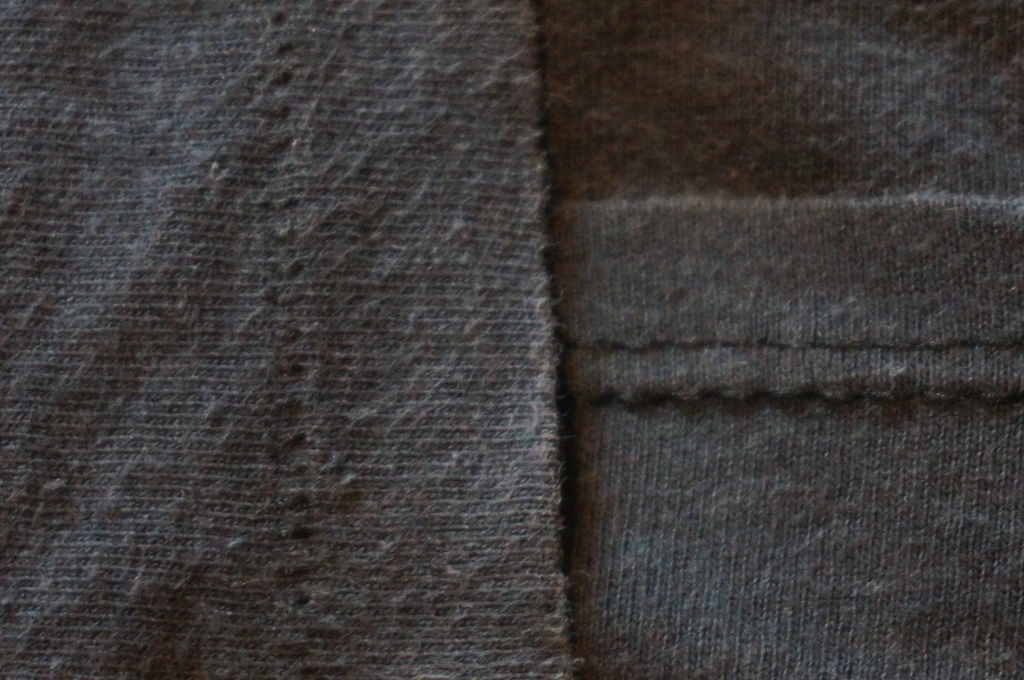
But, wait, There’s more! There are also examples of double-stitching on the arm and single on the bottom hem.
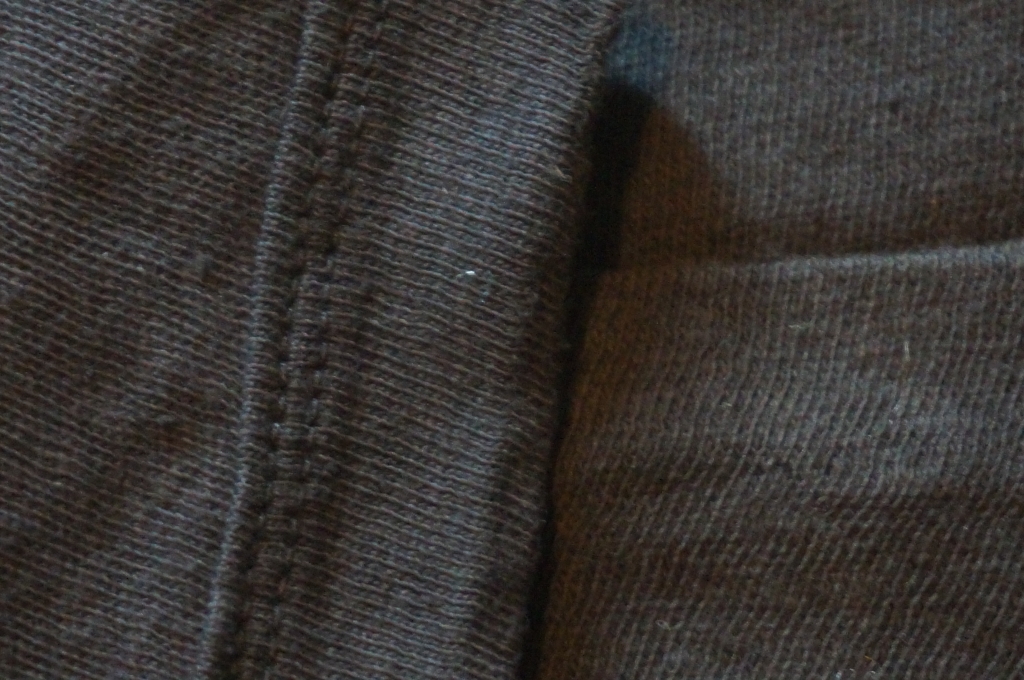
I went through a random pile of about 40 t-shirts I have stashed away and pulled out 8 examples that defy the common beliefs on vintage t-shirt stitching.
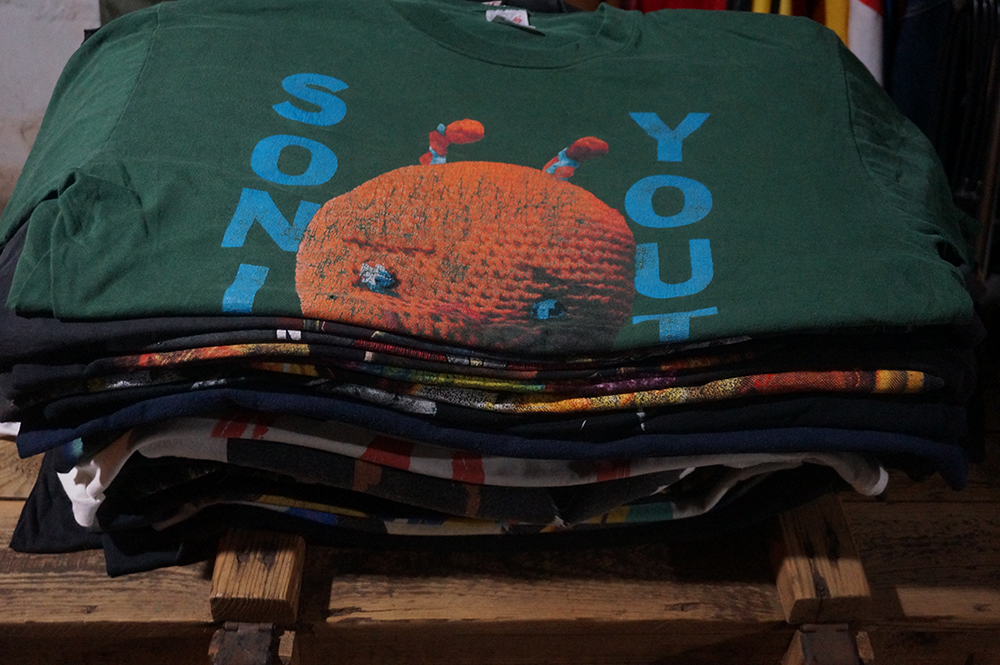
- Sonic Youth Dirty 100% Cotton Jerzees Tagged Tee with 1992 Copyright: Double Stitch Arm / Double Bottom
- Grave Digger 50/50 Jerzees Tagged Tee with 1994 Copyright: Single Arm / Double Bottom
- Prince 100% Cotton Euro Tagged Tee with 1990 Copyright: Double Stitched Arm / Single Bottom (sadly, also a victim of dryrot)
- Star Wars 100% Cotton US BULL Tagged Tee with 1997 Copyright: Single Stitch Arm / Single Bottom
- Queen American Tour 100% Cotton Pakistan Tagged 1978 Tee: Double Stitch Arm / Single on Bottom
- Guns N Roses Illusion II Worn White Tag With 1991 Brockum Copyright: Double Stitch Arm / Double Bottom
- Faith No More The Real Things 100% Cotton Brockum Tagged with 1989 Copyright: Single Stitch Arm / Double Bottom
- Jorma Kaukonen Too Hot To Handle 50/50 Thunderbird Sportswear Tagged from 1985: Single Stitch Arm / Double Bottom
So what do we learn? The timeline for double and single stitch seam construction is consistently inconsistent. And we’ve officially documented double-stitching as early as 1973.
These examples prove:
- Double stitching was around, well before Free Trade in 1994 and even in the 1970s.
- Single stitch still existed in the late 1990s.
- There are combinations of single and double-stitch on the same garment in each era.
Why is a Single Stitch Vintage T-Shirt More Desirable?
One of the thoughts behind this is that because double stitch construction is more standard in the modern era – a piece has a greater chance of being a reproduction if it’s on a double-stitched shirt. But based on the information above, this isn’t really true.
There is no benefit to the wearer in terms of comfort with a single stitch tee. In a blind test, someone wouldn’t be able to tell what stitching is on the t-shirt they have on. Single stitch doesn’t make the piece more comfortable. A feature like tri-blend for example can be argued that it’s more breathable. Because rayon is more durable than cotton, we could also argue that a tri-blend tee may last longer. So it could be argued that paying a premium for a rayon blended t-shirt is justifiable.
That said, double-stitching is a higher quality product – yet it’s often avoided like the plague.
Can We Use Single and Double-Stitch For Authentication?
If someone is putting together a forgery now, and with the misguided hype on single-stitching, you can bet they’ll use a blank that’s single-stitched – so this isn’t a reliable way of identifying a true vintage t-shirt. Counterfeiters are smart, they track trends, don’t underestimate their ability to pivot and improve their product. So if you’ve been solely focusing on the stitching while buying vintage tees as an indicator of authenticity, you might want to check your collection again.
To confuse things even more – modern t-shirt manufacturers will likely pick up on the single-stitch trend and start using it again. Just like the early 2000s when trendy t-shirt companies started to use 50/50 rather than the 100% cotton trend that came to be.
The irony in all this is that double stitching makes the garment more durable. Manufacturers wouldn’t use double the amount of thread if it wasn’t beneficial in some way. At some point, it was likely a selling feature in board rooms. “We’ve implemented double stitching” and screen printers migrated toward a better quality product.
Case in point, FOTL:
(and big thanks to @waxandthreadsvintage who I consulted for this piece)
So Can Double and Single Stitch Tell Us Anything?
Yes. As mentioned previously – 1970s and 80s t-shirts were mostly single-stitched. So if you have a t-shirt that claims to be from the 1980s – with double stitching – you have a solid reason to suspect it may not be genuine. There are many exceptions, so this is not a hard and fast rule. In the examples above we see double stitching on a shirt from the 70s and 80s.
But once you try to apply this same idea to t-shirts in the 1990s, it becomes an unreliable way to authenticate.
Tees from the early aughts are considered vintage and they’re mostly are printed on double stitch as they are to this day, so single-stitch has no relevance from 2000 onwards.
It’s time to embrace whatever stitching your true vintage piece features, and it’s time to use better methods to determine if it is in fact, true vintage.
Jimmy founded Defunkd in 2004 when he started selling vintage t-shirts online. 20 years of experience later and he hasn't looked back since. Actually, he looks back all the time given he's a sucker for nostalgia. For more, check the history of Defunkd and Jimmy's Expertise.


